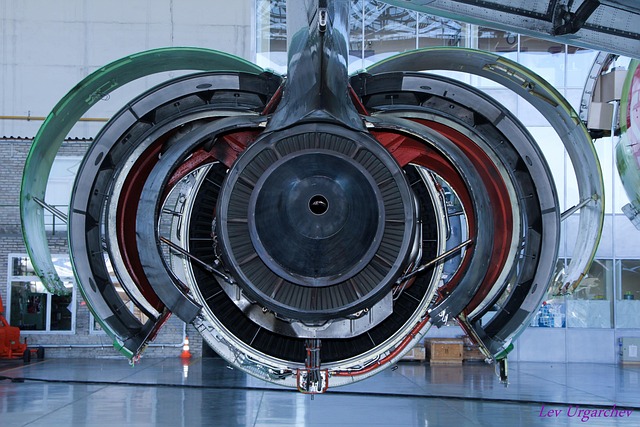
The Future of Farming: How Subsidies Influence Agricultural Practices
The agricultural landscape is undergoing a profound transformation, influenced heavily by the policies that govern it. Among these policies, government subsidies play a pivotal role in shaping agricultural practices, driving innovations, and addressing the pressing challenges of food security, environmental sustainability, and economic viability. Understanding how these subsidies function, their intended and unintended consequences, and their implications for the future of farming is crucial for stakeholders at every level, from policymakers to farmers and consumers.
The Role of Subsidies in Agriculture
Agricultural subsidies are financial support mechanisms provided by governments to enhance the production and income of farmers. These subsidies can take various forms, including direct cash payments, tax breaks, price supports, and grants for specific commodities or practices. The underlying rationale for these subsidies typically centers on fostering food security, stabilizing markets, and supporting rural economies. However, the mechanisms and impacts of these subsidies can be quite complex.
Types of Agricultural Subsidies
Subsidies can be broadly categorized into several types:
- Direct Payments: Farmers receive fixed payments based on historical production or land area, regardless of current market conditions.
- Price Supports: Governments set a minimum price for certain crops to protect farmers from market volatility.
- Crop Insurance Subsidies: Financial assistance is provided to couvre losses due to natural disasters or market fluctuations.
- Research and Development Grants: Funding is allocated for agricultural research to promote innovation and sustainable practices.
The Impact of Subsidies on Farming Practices
Subsidies can significantly influence the way farming is practiced. They can encourage certain behaviors, promote specific crops, and even lead to environmental consequences. Below, we explore some critical areas where subsidies have made their mark.
Encouraging Crop Diversification
One of the intended effects of agricultural subsidies is to encourage crop diversification. When farmers receive financial support for growing specific, often staple, crops like corn or soybeans, they may prioritize these commodities over others. This can lead to a lack of diversity in agricultural production, making the farming system more susceptible to disease, pests, and market fluctuations. In contrast, properly designed subsidies that reward diversified cropping systems can help farmers build resilience and foster biodiversity.
Innovation and Technology Adoption
Subsidies directed at research and development can drive innovation within the agricultural sector. Financial support for sustainable practices, such as precision agriculture, organic farming, and regenerative practices, can help farmers adopt new technologies that enhance productivity while reducing environmental impacts. For example, governments that provide grants for adopting solar energy or other renewable resources can encourage farmers to reduce their reliance on fossil fuels, which contributes to sustainability efforts.
Environmental Considerations
While subsidies can promote positive farming practices, they can also lead to negative environmental consequences. For instance, incentives to produce certain crops may encourage overuse of fertilizers and pesticides or contribute to soil degradation. The demand for high-yield crops, often driven by subsidies, can lead to monocultures that reduce biodiversity and increase vulnerability to pests and diseases. Therefore, there is a critical need to align subsidy programs with environmental goals and promote eco-friendly farming practices.
The Future Landscape of Agricultural Subsidies
As global challenges such as climate change, population growth, and resource depletion become more pressing, the future of agricultural subsidies must evolve to meet these demands. Policymakers are increasingly recognizing the need for reforms that integrate sustainability into subsidy programs. This change is essential for creating a resilient agricultural system capable of addressing the growing food demand without further harming the environment.
Shifting Focus towards Sustainability
Future subsidy programs are likely to focus more on rewarding sustainable practices. This could involve providing financial incentives for farmers who adopt environmentally friendly practices such as cover cropping, reduced tillage, and integrated pest management. Additionally, subsidies may prioritize support for farmers who engage in agroecological practices that enhance ecosystem services and promote biodiversity.
Integrating Technology and Data
The integration of technology and data analytics in agriculture is on the rise, and it will likely be supported by future subsidies. Precision agriculture, using data to optimize inputs and improve productivity while minimizing environmental impact, represents a leap in how farming is conducted. Governments may provide funding for training programs and research initiatives that promote these technologies, thereby ensuring that farmers are equipped to meet future challenges.
Collaborative Approaches
As we move forward, collaboration between stakeholders will play an essential role in shaping effective subsidy programs. Farmers, agricultural scientists, policymakers, and communities must work together to develop comprehensive strategies that address the multifaceted challenges of food production and environmental stewardship. This collaborative approach will help ensure that subsidies align with the holistic needs of the food system, promoting both economic viability and environmental health.
The Ethical Dimensions of Agricultural Subsidies
While the economic and environmental considerations of subsidies are crucial, ethical dimensions must also be considered. Questions regarding equity in subsidy distribution, urban-rural divides, and the support of small-scale versus industrial farms are central to discussions on the future of farming. Ensuring that subsidies create equitable opportunities for all farmers, particularly marginalized groups, is vital for fostering a fair and just food system.
Supporting Small Farmers
Small-scale farmers often lack the resources and market power of their industrial counterparts. Subsidies that emphasize support for small farmers can lead to more resilient local food systems and empower communities. Policies that prioritize local food production, community-supported agriculture, and equitable access to market opportunities can help mitigate the imbalances created by large-scale farming practices driven by subsidies.
Global Perspectives and Fair Trade
As agricultural subsidies play a role in international trade dynamics, the implications extend far beyond national borders. Developed countries’ subsidy practices can lead to market distortions that affect farmers in developing nations. Addressing these disparities through fair trade practices and international cooperation is crucial to creating an equitable global agricultural system. Future subsidy designs must consider the global implications of domestic agricultural policies.
Conclusion
The future of farming is intrinsically linked to the evolution of agricultural subsidies. As we face unprecedented challenges in food production and environmental sustainability, it is imperative to rethink how subsidies are structured and implemented. By aligning subsidy programs with sustainable practices, fostering innovation, supporting small-scale farmers, and ensuring ethical distribution, we can create a resilient agricultural system equipped to feed the world while preserving our planet. Collaboration among stakeholders will be key to navigating this complex landscape and unlocking the potential of agriculture to contribute positively to society and the environment.



